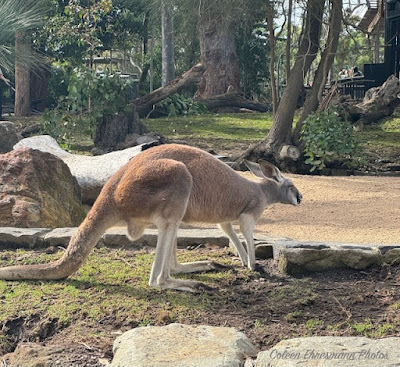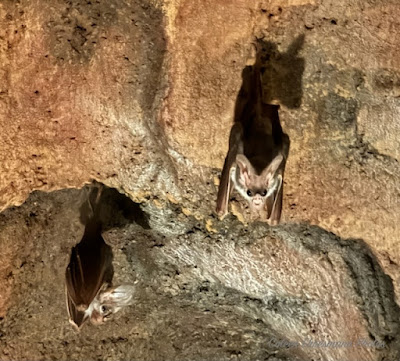Tarongo is the Aboriginal word meaning beautiful view. The concept for the zoo began in 1908. The zoo at this location opened in 1916 and has undergone some major changes in mission from leisure and recreation to education and animal conservation as well as in structure and expansion.
The Taronga Zoo is not to be confused with the Sydney Zoo founded in 2015 but is 24 miles from the city center. The Sydney Zoo has many of the same animals as the Taronga Zoo, which is located across the harbor in Sydney and much easier to get to using public transportation than the Sydney Zoo.
This is the last of the zoo posts, but one of the most interesting because of the native animals.
We caught the train a couple of blocks from our hotel for a quick ride to the harbor where we met my brother and sister-in-law.
We rode the ferry across the harbor from the Opera House to the Taronga Zoo.
ferry building across the harbor
main entrance to the zoo at the upper level
Many of the buildings within Taronga Zoo were designed to stand out as architectural landmarks. The most recognizable, the main entrance, was designed in the elaborate Edwardian Baroque style with Beaux-Arts planning and featured a copper domed entranceway and ornate plaster decorations of flora and fauna. The Taronga Conservation Strategy suggests that the choice of this aesthetic spoke of: “the prevailing Zoo philosophy to amuse and entertain…”. Much of the zoo’s early design (1913 – 1914) has been attributed to architect and army officer, Colonel Alfred Spain.
one of several metal art at the entrance
the animals of Australia will be the focus of this post
We would have missed this sighting completely if a zoo worker had not pointed out the tree kangaroo high in the trees. Tree Kangaroos are considered endangered. They spend 60% of their time in trees. I added a link to Wikipedia because I had never heard of a
tree kangaroo.
Red-Necked Wallaby
Kangaroo
considered the Kung-Fu Kangaroo because of its fighting techniques
A woman geocacher who attended the event I hosted in Sydney shared her experience when she encountered a kangaroo while geocaching. It looked as though the kangaroo was coming towards her and could attack. She was told the best defense is to lie on the ground, face-down, which she did. The kangaroo jumped on her back, ripping her pants from the waist-band to the cuff. The next day a large footprint was visible on her back. She was sore, but counted herself very lucky to be alive from her kangaroo attack.
Emu and a Wallaby
note the difference in size!
Koala
look how relaxed it is
tubes containing eucalyptus leaves were attached to each tree
koalas sleep up to 20 hours a day, digesting the fibre and toxins
Dingo
Dingo
also known as a feral dog
Spinifex Hopping-Mouse
Ghost Bats
Greater Bilby
a nocturnal, burrowing marsupial
Australian Sea Lions
Fiordland Penguin
notice the yellow feathers near the eyes
a view of the Fiordland Penguin swimming in the tank
A display showing the different sizes of the various penguin species. Little Penguins (or Blue or Fairy) are the smallest and on the far left. Emperor Penguins are the largest and on the right.
the Yellow-Eyed Penguin
and next to it, the Fiordland Penguin
they are sixth and fifth (in size) from the right/Emperor Penguin
The Yellow-Eyed penguin that I had read with decreased sights of 70% since November 2023 was the one excursion I canceled. I felt lucky to see it in this display.
Little Penguin
also known as Fairy Penguin or Blue Penguin or Little Blue Penguin
New Zealand Fur-Seal
And then an animal not related to Australia or New Zealand, but fitting the interesting category...
Red Panda
has carnivore teeth but eats mostly bamboo leaves
native to Nepal and China
There were other animals we did see and a few we did not, like the Sun Bear and the Tigers. Overall, I felt the Taronga Zoo was excellent and am glad we had the chance to spend the day there.



























No comments:
Post a Comment
Thanks for your comments!